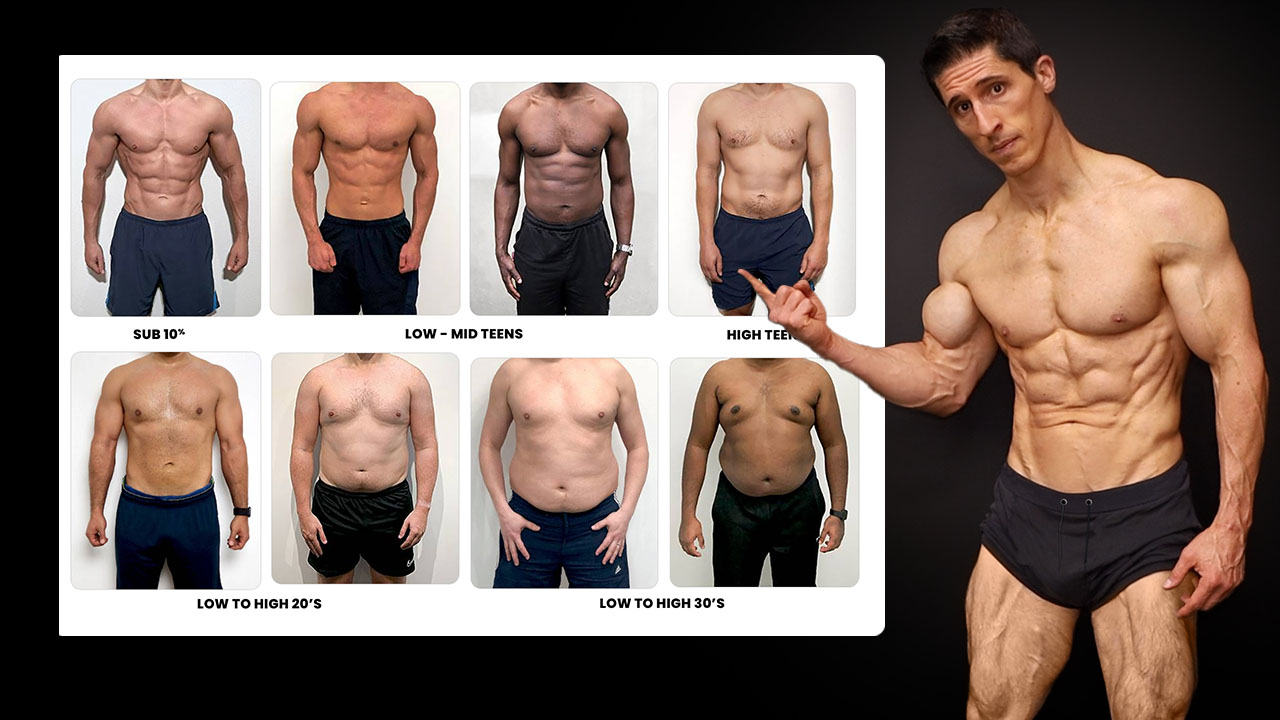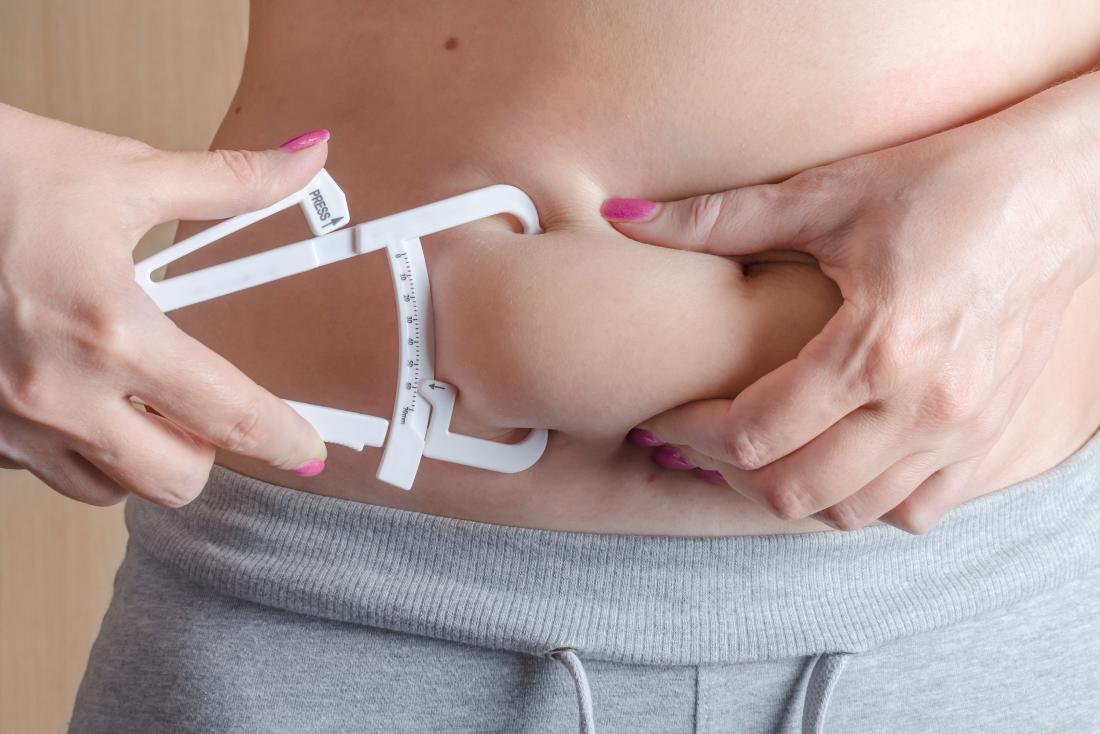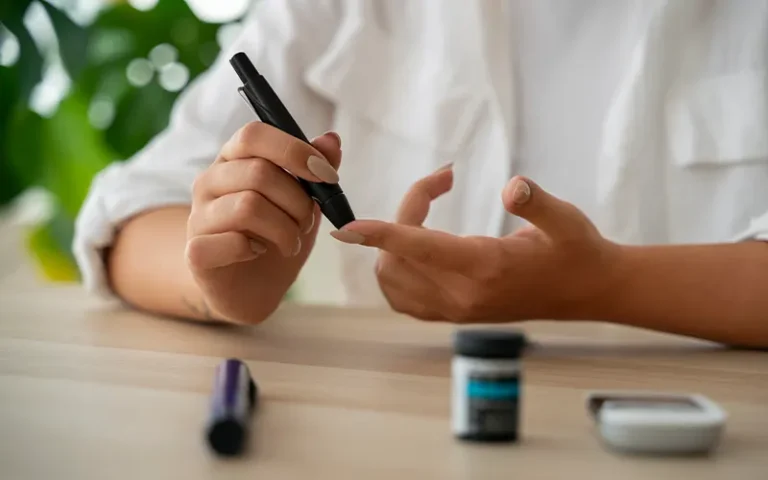How to Measure Body Fat Accurately at Home
To measure body fat accurately, use a body fat scale or calipers. A body fat scale uses bioelectrical impedance analysis to estimate body fat based on resistance to electrical current.
Calipers measure skinfold thickness at various points on the body to estimate body fat percentage. Measuring body fat is an important aspect of assessing overall health. Body composition, including the amount of body fat, can influence risk for chronic diseases such as heart disease and diabetes.
While body weight and BMI can be useful indicators, they do not provide a complete picture of health. Measuring body fat can help determine if someone is carrying too much fat, which can increase health risks. There are several methods for measuring body fat, including using a body fat scale or calipers. By accurately measuring body fat, individuals can make informed decisions about their health and wellness goals.
The Importance Of Body Fat Measurement
Measuring body fat is crucial for understanding your overall health and fitness. It provides valuable insights into your body composition and helps tailor a more effective fitness and nutrition plan. By knowing your body fat percentage, you can make informed decisions to improve your well-being and achieve your fitness goals.
Health Implications
Excessive body fat can lead to various health issues such as heart disease, diabetes, and high blood pressure. Understanding your body fat percentage allows you to assess your risk of developing these conditions and take proactive measures to maintain a healthy weight.
Fitness Goals
Whether your aim is to lose weight, build muscle, or enhance athletic performance, tracking your body fat percentage is essential. It helps you monitor the effectiveness of your fitness regimen and make necessary adjustments to reach your desired body composition.

Credit: www.amazon.com
Understanding Body Fat Percentage
When it comes to evaluating your overall health and fitness, understanding your body fat percentage is key. Body fat percentage refers to the proportion of fat in your body compared to your total weight. It is a more accurate indicator of your body composition than just tracking your weight alone. By knowing your body fat percentage, you can gain insight into your overall health and set realistic goals for weight loss or muscle gain.
Body Fat Ranges
Body fat percentage is typically categorized into different ranges, each representing a different level of body composition. These ranges provide a general guideline to help you assess where you currently stand and where you may want to be. Here are the common body fat ranges:
| Category | Men | Women |
|---|---|---|
| Athletes | 6-13% | 14-20% |
| Fitness | 14-17% | 21-24% |
| Average | 18-24% | 25-31% |
| Obese | 25%+ | 32%+ |
Keep in mind that these ranges can vary depending on age, genetics, and other factors. It’s important to consult with a healthcare professional or fitness expert to better understand your individual body fat goals.
Lean Mass Vs. Fat Mass
Understanding the difference between lean mass and fat mass is crucial when it comes to body composition. Lean mass refers to the weight of everything in your body except for fat, including muscles, bones, organs, and water. Fat mass, on the other hand, is the weight of just the fat in your body.
Increasing your lean mass and decreasing your fat mass is often the goal for those looking to improve their body composition. By focusing on building muscle through strength training and maintaining a healthy diet, you can increase your lean mass and reduce your overall body fat percentage.
Remember, it’s not just about the number on the scale but also about the distribution of that weight. A higher percentage of lean mass can contribute to a healthier and more functional body.
Traditional Methods For Estimating Body Fat
When it comes to determining body fat percentage, several traditional methods are commonly used. These methods provide estimates based on different factors such as body composition, height, and weight.
Body Mass Index (bmi) Limitations
BMI is a popular method to estimate body fat based on height and weight. However, BMI has limitations as it does not differentiate between muscle and fat mass.
Skinfold Calipers Technique
The skinfold calipers technique involves measuring skinfold thickness at different body sites. This method estimates body fat by measuring the subcutaneous fat layer.

Credit: athleanx.com
High-tech Home Devices
When it comes to measuring body fat, high-tech home devices have become increasingly popular. These innovative tools provide a convenient and accurate way to track your body composition in the comfort of your own home. In this article, we will explore two common types of high-tech devices used for measuring body fat: Bioelectrical Impedance Analysis (BIA) and Smart Scales and Handheld Devices.
Bioelectrical Impedance Analysis (bia)
Bioelectrical Impedance Analysis (BIA) is a widely used method for estimating body fat percentage. It works by passing a low-level electrical current through the body and measuring the resistance encountered. Since muscle contains more water and conducts electricity better than fat, the device can estimate body fat based on the impedance it encounters. BIA devices are often handheld and easy to use, making them a popular choice for home body fat measurements.
Smart Scales And Handheld Devices
Smart scales and handheld devices are another type of high-tech home device used for measuring body fat. These devices utilize advanced technology, such as sensors and algorithms, to provide accurate body composition data. Smart scales are often equipped with Bluetooth or Wi-Fi capabilities, allowing you to sync the measurements to your smartphone or computer for easy tracking. Handheld devices, on the other hand, are portable and offer a convenient way to measure body fat on the go.
The Role Of Circumference Measurements
Accurately measuring body fat is crucial for monitoring health and fitness progress. The role of circumference measurements, such as waist and hip circumference, is important as they can provide valuable information about body fat distribution and potential health risks.
Waist-to-hip Ratio
The waist-to-hip ratio (WHR) is a circumference measurement that compares the size of your waist to your hips. This ratio is an indicator of your body fat distribution and can be used to assess your risk of developing certain health conditions such as heart disease, diabetes, and stroke. To measure your waist-to-hip ratio, first, stand up straight and breathe out. Then, use a tape measure to measure the circumference of your waist at the narrowest point, which is usually just above the belly button. Next, measure the circumference of your hips at the widest point, which is usually around your buttocks. Divide your waist measurement by your hip measurement to get your waist-to-hip ratio.Navy Tape Measure Method
The Navy tape measure method is another circumference measurement that can be used to estimate your body fat percentage. This method involves measuring the circumference of your neck and waist to determine your body fat percentage. To use the Navy tape measure method, start by standing up straight and looking straight ahead. Then, use a tape measure to measure the circumference of your neck just below your Adam’s apple. Next, measure the circumference of your waist at the narrowest point, which is usually just above the belly button for men and at the level of the belly button for women. Once you have taken both measurements, use a Navy body fat calculator to estimate your body fat percentage based on your age, gender, height, weight, neck, and waist measurements. Circumference measurements such as the waist-to-hip ratio and the Navy tape measure method can be useful tools for assessing your body fat percentage and overall health. However, it’s important to remember that these measurements are just estimates and may not be accurate for everyone. If you’re concerned about your body fat percentage or health, it’s always best to consult a healthcare professional.The Dexa Scan: Understanding The Gold Standard
The DEXA Scan is considered the gold standard for measuring body fat percentage due to its accuracy and precision. Understanding this method is essential for those seeking reliable body composition data.
What Is Dexa?
DEXA, which stands for Dual-Energy X-ray Absorptiometry, is a medical imaging technology originally developed to assess bone mineral density. It works by emitting low-dose X-rays to differentiate between bone, lean tissue, and fat mass. This allows for a highly detailed analysis of body composition.
Accessibility And Home Alternatives
While DEXA scans are the most accurate method for measuring body fat, accessibility can be a limitation. There are alternative options such as bioelectrical impedance analysis (BIA) scales and handheld devices. However, it’s important to note that these alternatives may not provide the same level of accuracy as DEXA scans.
Diy Methods And Their Accuracy
Accurately measuring body fat can be achieved through various DIY methods. From using body fat calipers to calculating waist-to-hip ratios, these techniques provide insights into one’s overall health and fitness levels. However, it’s important to follow proper guidelines and consult professionals for the most accurate results.
The Mirror Test
The Mirror Test is a basic DIY method for estimating body fat percentage. It involves visually assessing your body shape and comparing it to reference images. While simple, this method is not highly accurate due to subjective interpretation.Tracking Changes Over Time
To monitor progress accurately, use consistent lighting and posture when using the Mirror Test. Take photos regularly and compare them side by side for noticeable changes. Remember, this method is best for tracking visual changes rather than precise measurements.Interpreting Your Results
To interpret your results accurately when measuring body fat, compare them to standard ranges for your age and gender. Understanding the numbers will help you gauge your progress and adjust your fitness and nutrition goals accordingly. Tracking changes over time is key to achieving your desired body composition.
Healthy Ranges For Men And Women
When To Seek Professional Advice
Interpreting Your Results: Understanding the numbers is crucial. Body fat percentage varies between genders. Healthy ranges for men and women differ. For men, a body fat percentage of 6-24% is considered healthy. In women, the healthy range is 14-31%. If your results fall outside these ranges, consult a healthcare professional. They can provide tailored advice based on your individual circumstances.Maintaining And Improving Body Composition
Maintaining and improving body composition involves measuring body fat accurately. By using methods like skinfold calipers, bioelectrical impedance, or DEXA scans, individuals can determine their body fat percentage and track their progress towards achieving their fitness goals. These measurements are essential for designing effective exercise and nutrition plans tailored to individual needs.
Dietary Considerations
Eating balanced meals rich in nutrients is key. Avoid processed foods high in sugar and saturated fats.Exercise And Lifestyle Changes
Engage in regular physical activity like cardio and strength training. Prioritize consistency in your routine. Key Points: – Eat a variety of fruits and vegetables. – Stay hydrated by drinking plenty of water daily. – Limit alcohol consumption to support your goals. Table: | Food Group | Importance | |——————–|—————————| | Fruits and veggies | Provide essential nutrients| | Lean proteins | Aid in muscle development | | Whole grains | Source of sustained energy | Bullet Points: – Prioritize whole, unprocessed foods. – Monitor portion sizes to avoid overeating. – Seek support from a nutritionist for tailored advice. Ordered List: 1. Incorporate lean proteins like chicken and fish. 2. Opt for whole grains such as quinoa and brown rice. 3. Include healthy fats like avocados and nuts in moderation.Common Mistakes To Avoid
When measuring body fat, common mistakes to avoid include relying solely on BMI, neglecting to consider muscle mass, and using inaccurate measuring tools. It’s important to use multiple methods, such as skinfold calipers and bioelectrical impedance analysis, for a more comprehensive assessment of body fat percentage.
Inconsistent Measurement
Relying On Single Methods
When measuring body fat, avoiding common mistakes is crucial for accurate results.
- Using different devices for measurements can lead to inaccurate readings.
- Ensure measurements are taken at the same time of day for consistency.
- Don’t solely rely on scales as they don’t distinguish between fat and muscle.
- Consider using a combination of methods like calipers and bioelectrical impedance.
Future Of Body Fat Measurement
The future of body fat measurement is an exciting and rapidly evolving field, with emerging technologies and the role of genetic testing playing a crucial role in revolutionizing how we assess and understand body composition.
Emerging Technologies
New technologies such as 3D body scanning and AI-powered image analysis are offering more accurate and convenient methods for measuring body fat percentage. These innovations provide detailed insights into body composition, enabling individuals to track their progress with precision and make informed decisions about their health and fitness goals.
The Role Of Genetic Testing
Genetic testing is poised to transform the way we approach body fat measurement by identifying genetic predispositions that influence an individual’s body composition. By understanding the genetic factors at play, personalized strategies for managing body fat levels can be developed, leading to more effective and tailored approaches to achieving optimal body composition.

Credit: www.medicalnewstoday.com
Frequently Asked Questions
How Can I Measure My Body Fat At Home?
You can measure body fat at home using body fat scales, skinfold calipers, or handheld body fat analyzers. These tools provide convenient and affordable ways to track your body fat percentage. Remember to follow the instructions carefully for accurate results.
How To Calculate Body Fat Accurately?
To calculate body fat accurately, use a body fat caliper, which measures skinfold thickness at various sites on the body. Take measurements at the triceps, abdomen, and thigh, then use a formula to calculate body fat percentage. Be sure to follow instructions carefully for the most accurate results.
What Does 20 Percent Fat Look Like?
20 percent fat in food would look like a moderate amount of marbling or visible fat on meat, some oil on the surface of cooked dishes, and a slight sheen or shine on dairy products. It’s important to remember that 20 percent fat is still considered a high amount and should be consumed in moderation as part of a balanced diet.
How To Find Body Fat Percentage With Height And Weight?
You can use an online body fat calculator that takes into account your weight, height, age, and gender. Alternatively, you can use a body fat measuring device or visit a professional to get an accurate reading. Keep in mind that these methods may not be 100% accurate, but can give you a good estimate of your body fat percentage.
Conclusion
Measuring body fat is essential for understanding and managing overall health and fitness. By following the methods discussed such as using body fat calipers or bioelectrical impedance devices, individuals can accurately track their progress and make informed decisions about their diet and exercise routines.
Remember, consistency is key when it comes to measuring body fat, so be sure to establish a regular schedule for monitoring your results. Stay committed to your goals and use this knowledge to empower yourself on your fitness journey.






